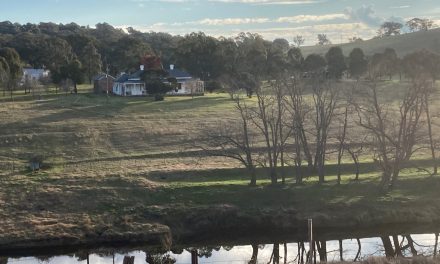The escapades of billionaire Elon Musk may be strange to watch, but they could also deliver a solution to regional Australia’s internet problem.
Musk, co-founder of $1.3 trillion Tesla and rocket company SpaceX, has begun rolling out his satellite internet service Starlink in Australia since April.
While it’s still in its beta phase, the new program is already showing signs it could deliver internet at speeds significantly faster than the NBN.
Yass local, Erin Marie Battrick decided to make the switch because her and her family were moving 10kms out of town this year.
They knew the Telstra 4G that was available out of town wasn’t going to cut it for working from home and NBN wireless wasn’t available in the area.
Erin said Starlink is faster, more stable, and if they ever move the service is also portable.
“We figured if it was as good as it was said to be, it would be worth the chance,” she said.
Erin and her husband put in for a pre-order earlier in the year, with a $140 deposit before Australia’s Starlink release date was announced.
The couple received an email from the company detailing that the product was ready to be dispatched by the end of September. They then paid the rest of the upfront fee totalling $709 including the initial deposit.
Erin said it took about two weeks to arrive from the United States but only took her husband about an hour to as- semble it, run the cable and turn it on.
“So worth the cost. Just the stability alone makes it worth it.”
Starlink, which provides internet using low orbit satellite constellations charges users $139 per month for an internet plan that promises speeds of between 50 Mbps and 150 Mbps (Megabits per second).

Christine and Andrew Carroll’s Starlink satellite dish
But due to the low number of people using the service, speeds currently available are between 200 Mbps and 320 Mbps.
It requires a self-configuring satellite, which costs $709 upfront and a further $100 for shipping and handling. Starlink’s beta program also has no cap on data.
In comparison, the standard installation of NBN’s Sky Muster satellite is free but it promises speeds of 12 Mbps for the basic service and 25 Mbps for the Sky Muster plus service.
Yass Valley residents Christine and Andrew Carroll also made the switch to Starlink and said they now get about 10 times the speed compared to their past NBN speeds.
Christine said they experienced a boost in their internet’s speed from 22 Mbps with NBN to over 265 Mbps at Starlink’s peak speed with very low latency, the quality of your connection to the network, at 30-40ms (milliseconds).
“Which compared to older forms of satellite internet, it can’t even compare,” she said. “It’s essentially made NBN look obsolete in the country (regional areas).”
Christine and Andrew knew their NBN speed could never get better than what it was due to their distance to the nearest fibre node, which is the nearby existing copper phone and internet network used to make the final connection to the NBN network.
There were no plans to build a fibre node box closer to their residence, so Christine said switching to Starlink was a “no brainer”.
“While the cost is higher than what we were paying with Telstra – We are getting a proper premium, future proof option.”
Andrew, who works at W.T. Dennis & Son Funeral Directors in Yass, said his only real concern with their new home internet is the quality of the Wi-Fi single emitted by the router included in Starlink’s package. But he said using another higher-quality router will fix that issue.
He also said that any reports of dropouts or stability issues are often linked to obstructions in the line of the Starlink satellite dish and that the system is only using a fraction of its intended final satellite count.
The reason the internet speeds offered by Musk are so fast is because of the satellites used.

NBN only uses two satellites that sit 36,000kms from earth and rotate in line with the planet. But Starlink, through parent company SpaceX, as of August 2021 has 1740 satellites with plans to eventually launch up to 40,000.
It’s important to note, these are known as low earth orbit satellites and sit just 300km from earth. They only work with ground stations that allow them to connect to the broader internet.
NBN has 10 ground stations, but Starlink is likely to have dozens because the satellites are at a lower orbit and have a smaller field of view.
Starlink’s Australian land-based facilities are: Broken Hill, Cobargo and Boorowa in New South Wales; Wagin, Merredin, and Cataby in Western Australia; Pimba and Ki Ki in South Australia; and Torrumbarry in Victoria.
Unfortunately, Starlink is not yet available everywhere in Australia but is taking orders from residents in most regional areas.
By Brianna O’Rourke








